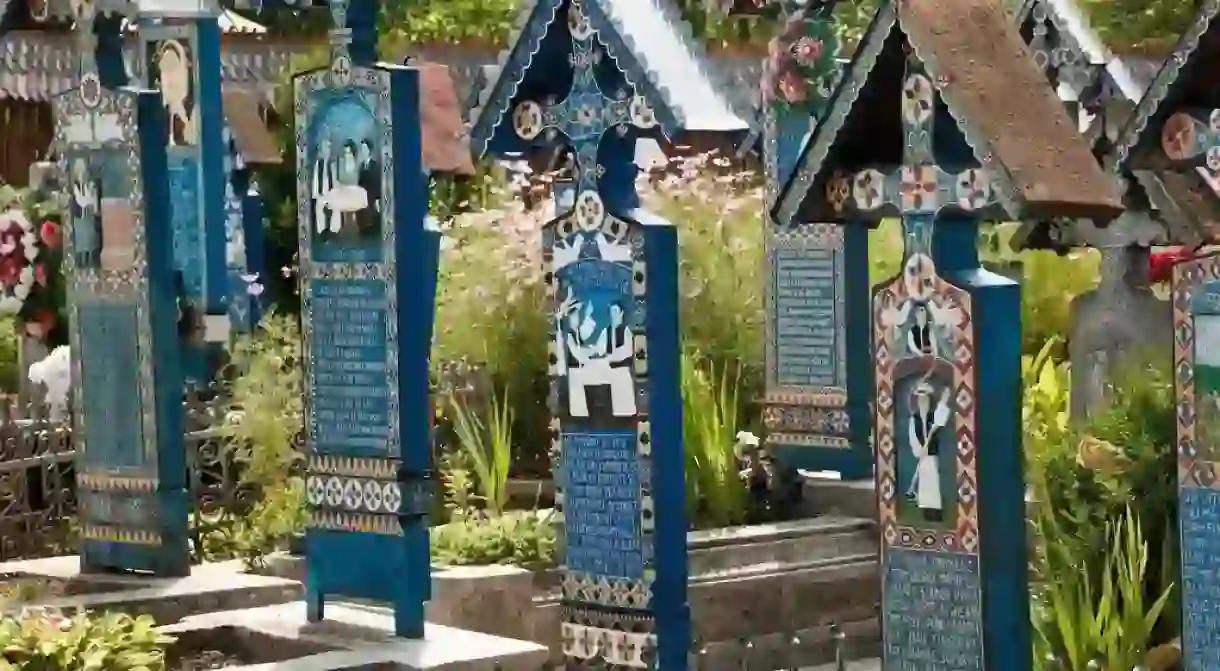This Romanian Cemetery Attempts to Make Light of Death

Who says tombstones must be cold and somber? With its beautifully carved wooden crosses painted in bright colors, the Merry Cemetery (Cimitirul Vesel) in Sapanta is not your average graveyard. Instead of evoking sobriety in its visitors, it celebrates the lives of those who passed away with wit, reverence and compassion.
The tradition
The tradition was started in the 1930s by one man, Ion Stan Patras, who incorporated in his creations, the traditional popular art from Maramures. He integrated this with ancient Romanian motifs to create a style that is truly unique.
https://www.instagram.com/p/BShDrAeDSOM/
Patras made roughly 700 of the crosses currently in the cemetery. For the past 30 years, his work has been carried forward by Dumitru Pop, who took over after Patras’ death. Pop carves the oak crosses in the small workshop behind his house.
https://www.instagram.com/p/BKOiGxThCtN/
The poems
https://www.instagram.com/p/BIe8csPBOAf/
Many of the poems are witty and humorous, and sometimes brutally honest, like the one below:
Here lies my poor mother-in-law
Three days longer had she lived
I would have lied and instead,
She would have read.
You the passersby
Try not to wake her
Cause if she gets home
She’ll get again on my case.
However, among them there are also heart-wrenching stories of young lives cut short, the sadness at leaving loved ones behind, and those poems that beseech readers not to take life for granted.
https://www.instagram.com/p/BQGbj5cg-AJ/
The colours
The predominant color on the crosses is a special type of blue, also known as ‘Sapanta blue.’ The rest have a symbol associated with them: green represents life, yellow signifies fertility, red reflects passion, and black represents death.
https://www.instagram.com/p/BLu97BvDcBg/
As expected, Dumitru Pop already has his plot reserved in the graveyard and will sculpt his own merry cross. Also, he is making sure the tradition of these colorful sculptures isn’t lost when he is gone. He is currently training a few apprentices, who must meet the high standard, in his words, of being accomplished sculptors, painters and poets.













